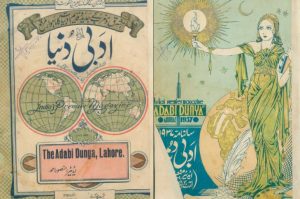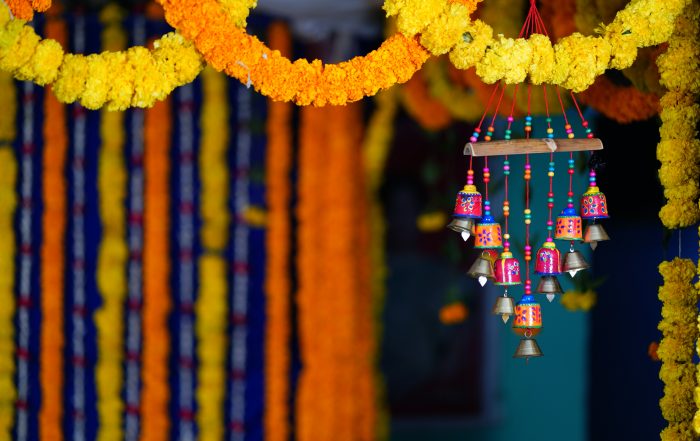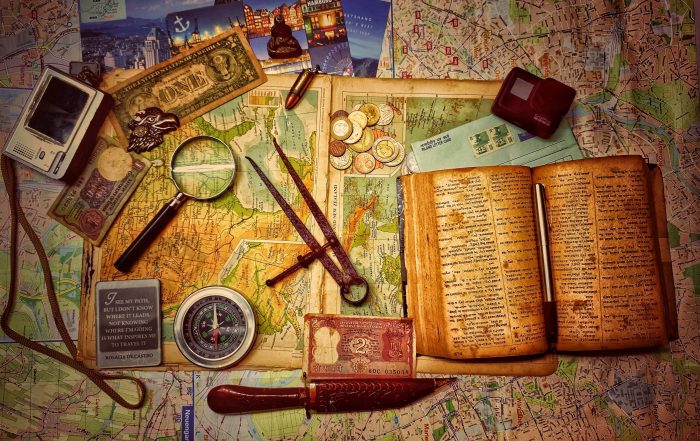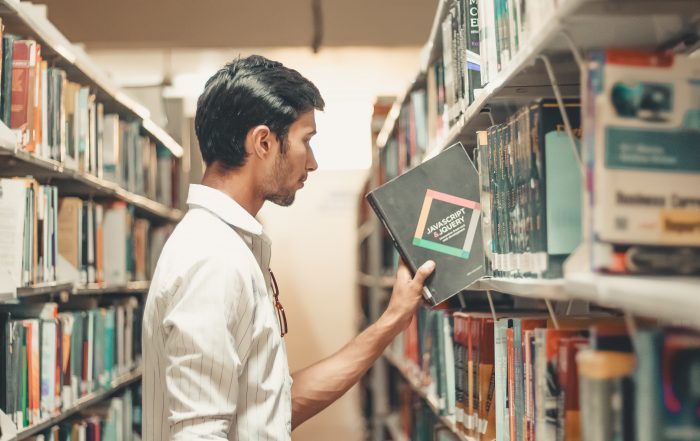Case study: North India
बहुभाषीयता, स्थानियता और सार्थक राहें: विश्वसाहित्य को कैसे समझा जाए
اردو MULOSIGE کثیرالزبانی، علقائی، اور با معنی و با مقصد راہیں: عالی ادب کو کس پیرائے
میں سمجھا جائے

Covers from the literary magainze “Adabi Dunya”.
North India had been a major participant in the Persian cosmopolis; the older parallel expansion and cultivation of literary production in Persian and various forms of the vernacular (in multiple scripts) persisted even as in the 19th century English gradually imposed itself as the new High language and as the model of literary modernity, and Hindi and Urdu codified their own historical narratives in competition with each other. Persian literature was subsequently marginalised and the old Persian-Hindi diglossia disavowed. Despite persistent low literacy, from the 1860s publishers in north India were multilingual and active in South Asia and beyond, and a heterogeneous print culture developed consisting of joint journal-and-book-publishers, theatre chapbooks and songbooks. The English colonial library also had a large lucrative market here, and early global writers like Kipling made north India part of the “significant geography” of English literature.
How did north India work as a “multilingual local” in the late colonial period (1880-1940)? The project will focus on the short story, translations and literary debates on world literature in Hindi, Urdu, and English journals; on “readerly contacts” with English and other foreign and Indian literatures and transculturations; and on the inclusion/exclusion of orature from literary canons. It will then consider post-colonial developments, including writerly reactions to the political marginalization of Urdu and initial rejection of English; literary debates, translations and circulation of world literature in journals (including the influential “little magazines”); and the important domain of theatre, which negotiated pre-colonial traditions, Indian multilingualism, and “foreign” modern forms and intercultural experiments (Dalmia).
Explore MULOSIGE’s collection of Progressive and Modernist Urdu poetry, translated by Professor Carlo Coppola.
Finally, against the recent international boom of Indian fiction in English, we will discuss with local stakeholders current trends in writing, publishing, and translation. Here our particular focus will be on poetry (Mehrotra, see Zecchini), in order to show how much of contemporary non-western literatures and literatures produced in multilingual locations today falls through the cracks of the paradigms provided by the global meta narratives. Local partners will include participants in the earlier Leverhulme network on postcolonial translation in South Asia (Srivastava, Kumar), publishers, and the organizer of the Jaipur festival (Gokhale), the largest literary festival in Asia.
Research team
- Professor Francesca Orsini, Principal Investigator
- Dr Fatima Burney, Postdoctoral Researcher
- Jack Clift, PhD student
Recent posts
Editorial for Special Issue of ‘Foreign Literatures’ on Indian Literature
Simon Leese translates ‘This issue’ (editorial for special issue on Indian Literature) by ʿAlī ʿUqlah ʿUrsān (Ali Ukla Ursan) al-Ādāb al-ajnabīyah 54 and 55, Winter [1987] and Spring 1988: 3-8. The original essay can
The Development of Arab-Indian Cultural Relations
Simon Leese translates Taṭawwurāt al-ʿalāqāt al-thaqāfīyah al-ʿarabīyah—al-Hindīyah (The Development of Arab-Indian Cultural Relations) by Mohiaddin Alwaye in al-Risālah 1083, 15th October 1964: 15-17, 20. The original essay can be found at the Alsharekh.org archive.
Glimpses into Modern Indian Literature
Simon Leese translates Lamaḥāt min al-adab al-Hindī al-ḥadīth by Muhammad Fikri (al-Thaqāfah 43, 12th May 1964: 25-27). The original essay can be found at the Alsharekh.org archive. Glimpses into Modern Indian Literature




